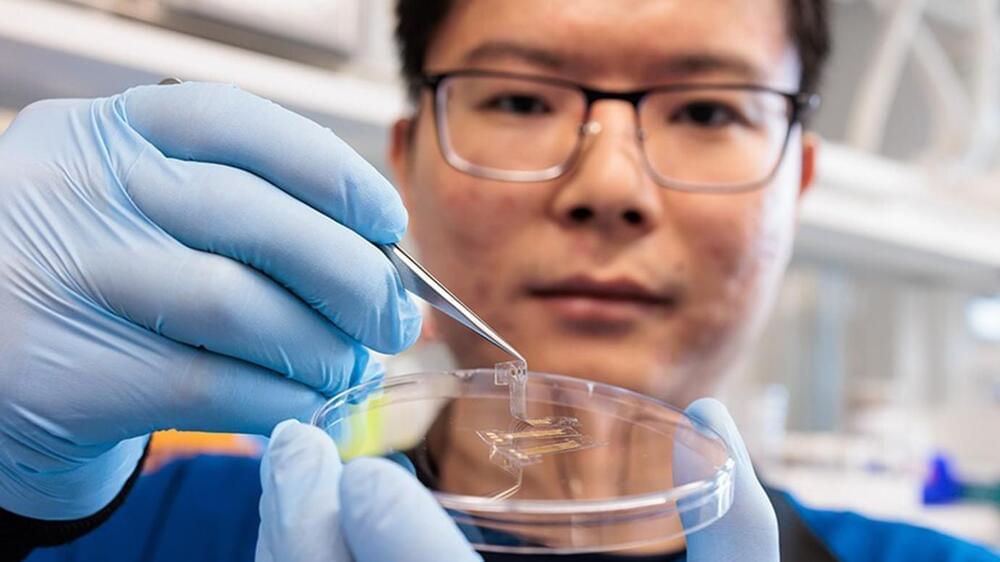Nanotechnology is without a doubt one of the most exciting future technologies, but what is it exactly? And how will it benefit mankind? Well sit back and get comfy because in todays video, we will be answering all of those questions and more!IPhone wireless charging cases — https://amzn.to/3bz0oRg.
IPhone Backup — https://amzn.to/3w8Usbj.
Wireless Earbuds — https://amzn.to/2ZTjwau.
IPhone Bargains — https://amzn.to/3jXvCGb**** Gears and Equipment we use****
1. Fully Automatic Espresso Machine — https://amzn.to/3bdHcbr.
2. Perfect Desk Chair — https://amzn.to/2ZlMNd2
3. Wireless Mechanical Keyboard — https://amzn.to/3pA71Lw.
4. Wireless DTS Headphone — https://amzn.to/3juz2Qv.
5. Vocal Microphone — https://amzn.to/2XEDsN4
6. UltraWide Monitor — https://amzn.to/3jyteWg**** Free Handy Tools YOU must try ****Tubebuddy In-depth channel/video analysis– https://bit.ly/3y0SOc6
Amazon Prime — https://amzn.to/3mb0BzG
Epidemic Music — https://bit.ly/3FDplbT
Fiverr — Freelance Marketplace — https://bit.ly/3FFARnL
Here at Future Now we aim to bring you the most informative, fascinating and engaging Technology videos on YouTube.🔔 Subscribe To Our Channel: https://bit.ly/3nRoVH8
Copyright Disclaimer:
Under section 107 of the Copyright Act 1976, allowance is made for “fair use” for purposes such as criticism, comment, news reporting, teaching, scholarship, education and research. Fair use is a use permitted by copyright statute that might otherwise be infringing. Non-profit, educational or personal use tips the balance in favor of fair use. *DISCLOSURE*
We are affiliated, but not sponsored by any product featured in this video.
Some links in the description are affiliate links to products, which means if you click on them and buy the product, we will receive a small commission.
Not being sponsored allows us to keep our own opinions and provide product reviews without bias. From the millions of products, we appreciate your support.#NanoTech #Nanotechnology #NanoTechHacking
Get the latest international news and world events from around the world.

Virtual Reality for Supporting the Treatment of Depression and Anxiety: Scoping Review
Conclusions: Most studies demonstrated the use of VR to be effective for supporting the treatment of anxiety or depression in a range of settings and recommended its potential as a tool for use in a clinical environment. Even though standalone headsets are much easier to work with and more suitable for home use, the shift from tethered VR headsets to standalone headsets in the mental health environment was not observed. All studies that looked at the use of CBT either in vivo or in a virtual environment found it to be effective in supporting the treatment of anxiety or depression.
Keywords: CBT; anxiety; depression; mental health; virtual reality.
©Nilufar Baghaei, Vibhav Chitale, Andrej Hlasnik, Lehan Stemmet, Hai-Ning Liang, Richard Porter. Originally published in JMIR Mental Health (https://mental.jmir.org), 23.09.2021.
VR Trips Help Treat Depression in the Elderly
Like this video about how Viva Vita addresses loneliness and depression in the elderly using VR. Subscribe here: https://freeth.ink/youtube-subscribe-depressionintheelderly.
Watch the next video in our series on virtual reality therapy: https://youtu.be/IZE41KejIBw.
In the United States, about six million people over the age of 65 experience late life depression and about one-third of seniors feel lonely.
Viva Vita is taking a novel approach to addressing both loneliness and depression in the elderly population.
The organization provides virtual reality excursions for seniors to help them break through personal limitations and find enjoyment exploring new settings.
At first glance, virtual reality for seniors might seem like a gimmick, but early studies of VR for depression, chronic pain, and other ailments are quite promising.
GENETIC ENGINEERING & BIOTECHNOLOGY in the Future (2077 & Beyond)
What happens when humans begin combining biology with technology, harnessing the power to recode life itself.
What does the future of biotechnology look like? How will humans program biology to create organ farm technology and bio-robots. And what happens when companies begin investing in advanced bio-printing, artificial wombs, and cybernetic prosthetic limbs.
Other topic include: bioengineered food and farming, bio-printing in space, new age living bioarchitecture (eco concrete inspired by coral reefs), bioengineered bioluminescence, cyberpunks and biopunks who experiment underground — creating new age food and pets, the future of bionics, corporations owning bionic limbs, the multi-trillion dollar industry of bio-robots, and bioengineered humans with super powers (Neo-Humans).
As well as the future of biomedical engineering, biochemistry, and biodiversity.
_______
Created by: Jacob.
Narration by: Alexander Masters (www.alexander-masters.com)
Modern Science Fiction.
The biological switch that could turn neuroplasticity on and off in the brain
The Conversation Weekly podcast is taking a short break in August. In the meantime, we’re bringing you extended versions of some of our favourite interviews from the past few months.
This week, how researchers discovered a biological switch that could turn on and off neuroplasticity in the brain – the ability of neurons to change their structure. We speak to Sarah Ackerman, a postdoctoral fellow at the Institute of Neuroscience and Howard Hughes Medical Institute at the University of Oregon, about what she and her team have found and why it matters.
This episode of The Conversation Weekly features an extended version of an interview first published on April 29. The Conversation Weekly is produced by Mend Mariwany and Gemma Ware, with sound design by Eloise Stevens. Our theme music is by Neeta Sarl. You can sign up to The Conversation’s free daily email here. Full credits for this episode available here.
Further reading: Astrocyte cells in the fruit fly brain are an on-off switch that controls when neurons can change and grow, by Sarah DeGenova Ackerman, University of OregonSwimming gives your brain a boost – but scientists don’t know yet why it’s better than other aerobic activities, by Seena Mathew, University of Mary Hardin-BaylorWhat is brain plasticity and why is it so important?, by Duncan Banks, The Open University.
The Nano Robots Inside You
Inside of you, at all times, there are trillions of natural nano robots walking around, taking out the trash, and packaging strands of DNA. Below the calm, ordered exterior of a living organism lies a complex collection of molecular machines working together to create something greater than themselves. Physicist and author of “Life’s Ratchet” Peter Hoffmann shows us the tiny city beneath the surface.
Watch the full program here: https://youtu.be/FzFY5ms3AUc.
Original program date: May 30, 2013
The World Science Festival gathers great minds in science and the arts to produce live and digital content that allows a broad general audience to engage with scientific discoveries. Our mission is to cultivate a general public informed by science, inspired by its wonder, convinced of its value, and prepared to engage with its implications for the future.
Visit our Website: http://www.worldsciencefestival.com/
Like us on Facebook: https://www.facebook.com/worldsciencefestival.
Follow us on twitter: https://twitter.com/WorldSciFest
Dublin Biostasis Evening
A short report on our satellite meeting at the Longevity Summit 2023.

Discovered an aging “brake pedal”?
How does the research conducted by Lige Leng at the Institute of Neuroscience of Xiamen University in China (I link it to you here)? It all starts with the study of the “inflamed brain”: many diseases of old age are associated with low-level chronic inflammation in the brain, organs, joints and circulatory system. A phenomenon sometimes called “inflammaging”.
You know it: over time all of our body’s repair systems deteriorate, our DNA and proteins accumulate damage, metabolism stumbles and cells stop doing their job. That’s life, beauty.
We’re all on our way to the exit, but research on worms, flies, mice and monkeys show that going at this speed isn’t inevitable. Diet and lifestyle changes (and, perhaps, upcoming anti-aging drugs) can curb decay and give us many more years of life, especially healthy life.
A new discovery suggests that a protein in the brain could be a switch to control inflammation and, with it, many symptoms and consequences of aging. If scientists can figure out how to distribute it safely in humans, we will finally put the first major brake on the aging process.

